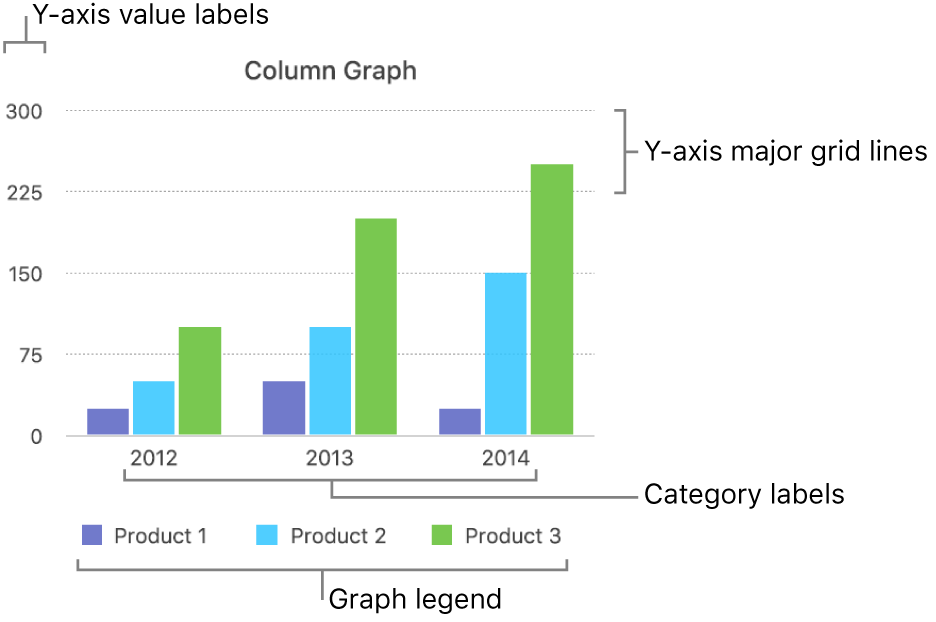
Add a legend, grid lines and other markings in Keynote on iPhone
There are several types of graph markings and axis labels you can add to your graphs. You can modify their look to emphasise your data, you can style the graph title and value label text differently to make them stand out from the other text.

Add a legend
Tap the graph, then tap
 .
.Tap Graph, then turn on Legend.
If you don’t see Legend, swipe up from the bottom of the controls.
To adjust the size of the legend, tap the legend, then drag the green dots.
Drag the legend to where you want it.
Show or hide axis grid lines
Tap the graph, then tap
 .
.Tap Style, tap Gridlines, then turn on Gridlines for the X Axis or Y Axis.
Tap Tick Marks to choose whether tick marks are inside, outside or centred. Tap None to turn off tick marks.
These options vary depending on the type of graph and data.
Show or remove reference lines
You can add reference lines to a graph to mark the average, median, minimum or maximum values. Reference lines make a graph easier to interpret at a glance and can help you compare the values in the graph to a benchmark value.
All graph types can have reference lines except stacked graphs, dual axis graphs, 3D graphs, pie charts and doughnut charts. A graph can have up to five reference lines.
Tap the graph.
Tap
 , then tap Graph.
, then tap Graph.Tap Add Reference Line, then tap any of the following:
Average: A line that runs through the mean value of the data
Median: A line that runs through the middle value of the data
Minimum: A line that runs through the lowest value of the data
Maximum: A line that runs through the highest value of the data
Custom: A line that runs through the value you enter in the Custom section

To clarify what the reference line represents, tap to turn on Show Name and Show Value.
To remove a reference line, tap the graph to select it, tap ![]() , tap Reference Lines, tap the name of the reference line, then tap Remove Line.
, tap Reference Lines, tap the name of the reference line, then tap Remove Line.
Note: When you drag the slider on an interactive graph to view different data sets, its reference lines move.
Show or remove error bars
Error bars give you a general impression of your data’s accuracy. They’re represented as small marks the length of which indicates the amount of uncertainty associated with a given data series (the data’s variability). You can add them to 2D line graphs, area graphs, bar and column graphs, stacked bar and column graphs, bubble charts and scatter plots.
Tap the graph, tap
 , then tap Graph.
, then tap Graph.Tap Error Bars, then choose an option.
Use the controls to change the look of the error bars.
When you create a graph, Auto-Fit is automatically turned on for error bars to prevent overlap. To see all error bars, turn off Auto-Fit.
To remove error bars, tap Error Bars, then choose None.
Show or remove trendlines
Trendlines show you the overall direction (or trend) of your data. Trendlines appear in bar, line, scatter, bubble, column and area graph.
Tap the graph, tap
 , then tap Graph.
, then tap Graph.Tap Trendlines, then choose the type of line you want to add.
Use the controls to change the look of the trendline.
To remove trendlines, tap the graph, tap ![]() , tap Graph, tap Trendlines, then choose None.
, tap Graph, tap Trendlines, then choose None.